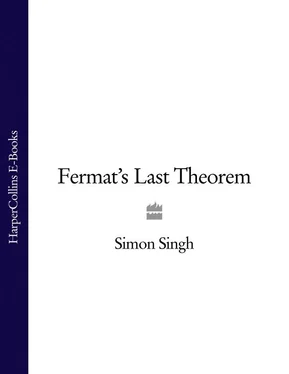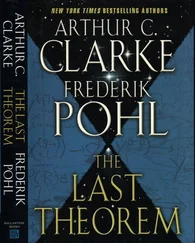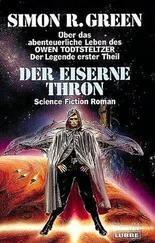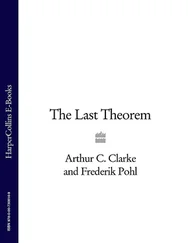As well as sharing the parentage of probability theory, Fermat was deeply involved in the founding of another area of mathematics, calculus. Calculus is the ability to calculate the rate of change, known as the derivative, of one quantity with respect to another. For example, the rate of change of distance with respect to time is better known simply as velocity. For mathematicians the quantities tend to be abstract and intangible but the consequences of Fermat’s work were to revolutionise science. Fermat’s mathematics enabled scientists to better understand the concept of velocity and its relation to other fundamental quantities such as acceleration – the rate of change of velocity with respect to time.
Economics is a subject heavily influenced by calculus. Inflation is the rate of change of price, known as the derivative of price, and furthermore economists are often interested in the rate of change of inflation, known as the second derivative of price. These terms are frequently used by politicians and the mathematician Hugo Rossi once observed the following: ‘In the fall of 1972 President Nixon announced that the rate of increase of inflation was decreasing. This was the first time a sitting president used a third derivative to advance his case for re-election.’
For centuries Isaac Newton was thought to have discovered calculus independently and without any knowledge of Fermat’s work, but in 1934 Louis Trenchard Moore discovered a note which set the record straight and gave Fermat the credit he deserves. Newton wrote that he developed his calculus based on ‘Monsieur Fermat’s method of drawing tangents’. Ever since the seventeenth century calculus has been used to describe Newton’s law of gravity and his laws of mechanics, which depend on distance, velocity and acceleration.
The discovery of calculus and probability theory would have been more than enough to earn Fermat a place in the mathematicians’ hall of fame, but his greatest achievement was in yet another branch of mathematics. While calculus has since been used to send rockets to the moon, and while probability theory has been used for risk assessment by insurance companies, Fermat’s greatest love was for a subject which is largely useless – the theory of numbers. Fermat was driven by an obsession to understand the properties of and the relationships between numbers. This is the purest and most ancient form of mathematics and Fermat was building on a body of knowledge that had been handed down to him from Pythagoras.
The Evolution of Number Theory
After Pythagoras’ death the concept of mathematical proof rapidly spread across the civilised world, and two centuries after his School was burnt to the ground the hub of mathematical study had moved from Croton to the city of Alexandria. In 332 BC, having conquered Greece, Asia Minor and Egypt, Alexander the Great decided that he would build a capital city that would be the most magnificent in the world. Alexandria was indeed a spectacular metropolis but not immediately a centre of learning. It was only when Alexander died and his half-brother Ptolemy I ascended the throne of Egypt that Alexandria became home to the world’s first-ever university. Mathematicians and other intellectuals flocked to Ptolemy’s city of culture, and although they were certainly drawn by the reputation of the university, the main attraction was the Alexandrian Library.
The Library was the idea of Demetrius Phalaerus, an unpopular orator who had been forced to flee Athens, and who eventually found sanctuary in Alexandria. He persuaded Ptolemy to gather together all the great books, assuring him that the great minds would follow. Once the tomes of Egypt and Greece had been installed, agents scoured Europe and Asia Minor in search of further volumes of knowledge. Even tourists to Alexandria could not escape the voracious appetite of the Library. Upon entering the city, their books were confiscated and taken to the scribes. The books were copied so that while the original was donated to the Library, a duplicate could graciously be given to the original owner. This meticulous replication service for ancient travellers gives today’s historians some hope that a copy of a great lost text will one day turn up in an attic somewhere in the world. In 1906 J.L. Heiberg discovered in Constantinople just such a manuscript, The Method , which contained some of Archimedes’ original writings.
Ptolemy’s dream of building a treasure house of knowledge lived on after his death, and by the time a few more Ptolemys had ascended the throne the Library contained over 600,000 books. Mathematicians could learn everything in the known world by studying at Alexandria, and there to teach them were the most famous academics. The first head of the mathematics department was none other than Euclid.
Euclid was born in about 330 BC. Like Pythagoras, Euclid believed in the search for mathematical truth for its own sake and did not look for applications in his work. One story tells of a student who questioned him about the use of the mathematics he was learning. Upon completing the lesson, Euclid turned to his slave and said, ‘Give the boy a penny since he desires to profit from all that he learns.’ The student was then expelled.
Euclid devoted much of his life to writing the Elements , the most successful textbook in history. Until this century it was also the second best-selling book in the world after the Bible. The Elements consists of thirteen books, some of which are devoted to Euclid’s own work, and the remainder being a compilation of all the mathematical knowledge of the age, including two volumes devoted entirely to the works of the Pythagorean Brotherhood. In the centuries since Pythagoras, mathematicians had invented a variety of logical techniques which could be applied in different circumstances, and Euclid skilfully employed them all in the Elements. In particular Euclid exploited a logical weapon known as reductio ad absurdum , or proof by contradiction. The approach revolves around the perverse idea of trying to prove that a theorem is true by first assuming that the theorem is false. The mathematician then explores the logical consequences of the theorem being false. At some point along the chain of logic there is a contradiction (e.g. 2 + 2 = 5). Mathematics abhors a contradiction and therefore the original theorem cannot be false, i.e. it must be true.
The English mathematician G.H. Hardy encapsulated the spirit of proof by contradiction in his book A Mathematician’s Apology: ‘Reductio ad absurdum, which Euclid loved so much, is one of a mathematician’s finest weapons. It is a far finer gambit than any chess play: a chess player may offer the sacrifice of a pawn or even a piece, but a mathematician offers the game.’
One of Euclid’s most famous proofs by contradiction established the existence of so-called irrational numbers. It is suspected that irrational numbers were originally discovered by the Pythagorean Brotherhood centuries earlier, but the concept was so abhorrent to Pythagoras that he denied their existence.
When Pythagoras claimed that the universe is governed by numbers he meant whole numbers and ratios of whole numbers (fractions) together known as rational numbers. An irrational number is a number that is neither a whole number nor a fraction, and this is what made it so horrific to Pythagoras. In fact, irrational numbers are so strange that they cannot be written down as decimals, even recurring decimals. A recurring decimal such as 0.111111 … is in fact a fairly straightforward number, and is equivalent to the fraction 1⁄ 9. The fact that the ‘1’ repeats itself forever means that the decimal has a very simple and regular pattern. This regularity, despite the fact that it continues to infinity, means that the decimal can be rewritten as a fraction. However, if you attempt to express an irrational number as a decimal you end up with a number which continues forever with no regular or consistent pattern.
Читать дальше












